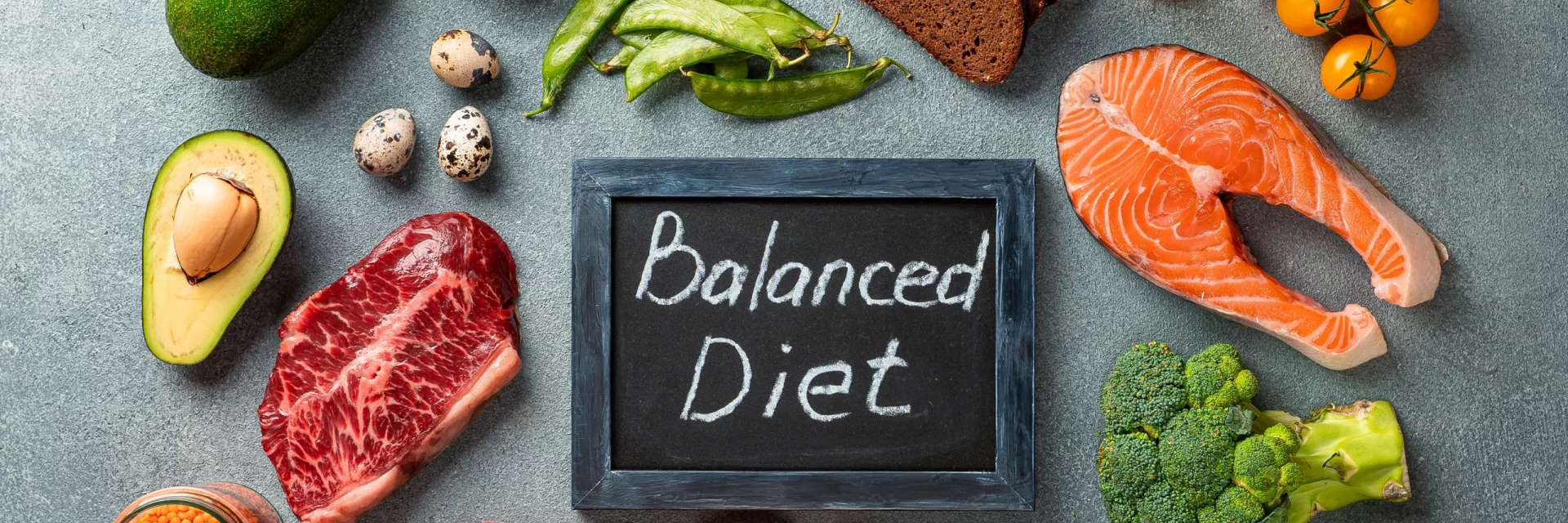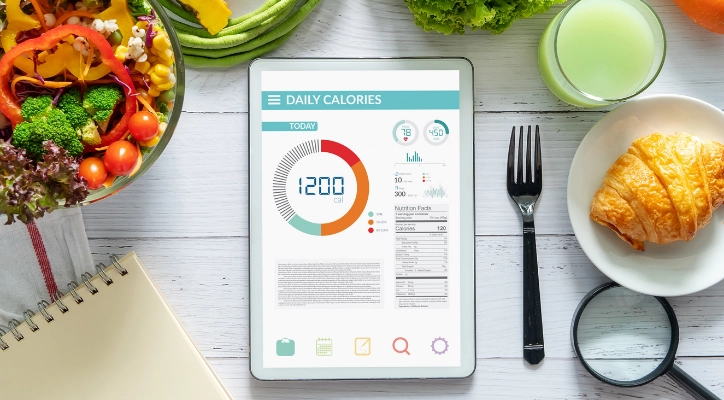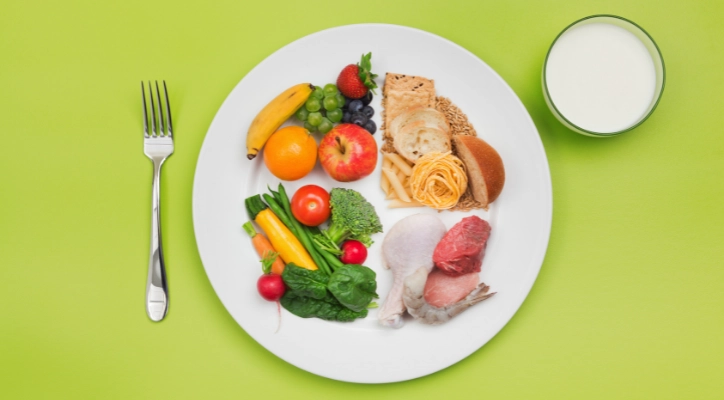
The Perfect Daily Routine & Balanced Diet Chart
If you struggle with leading a healthy lifestyle, let us help you with this daily routine and balanced diet chart.
When it comes to fitness, there’s more to success than just eating healthy and working out. You need a routine that works for your lifestyle and in order to stick to that routine you sometimes need a little bit of organization. In this article, we’ll talk about how you can develop a daily routine and balanced diet chart that will help you achieve your health goals.

What is a Daily Routine & Balanced Diet Chart?
A daily routine and balanced diet chart is a tool that can help you prioritize your daily tasks and make sure you’re getting all of the nutrients your body needs. It can also help you identify areas where you may be lacking or overdoing it.
It’s important to keep in mind that this isn’t a one-size-fits-all solution to any problem, but rather a guide that can help you get on track with your goals and make sure they’re aligned with what will work best for your body.
A balanced diet chart provides information on:

- Calories: This is the amount of energy found in food that is needed to keep our bodies functioning properly. The average person requires between 1,800 to 2,000 calories per day.
- Carbohydrates: Carbs provide energy to our bodies and brain. They come in two forms: simple and complex. Simple carbs are found in sugar, honey, and fruit juice, while complex carbs are derived from grains like bread, pasta, and rice.
- Protein: Protein boosts metabolism, builds muscle tissue, and aids in recovery after exercise. Protein can be found in meat such as chicken breast, fish, red meat, dairy products like cheese and yogurt, and legumes such as lentils or beans.

- Dietary Fiber: Dietary fiber helps prevent constipation and lowers cholesterol levels in the bloodstream, thereby reducing your risk of heart diseases like stroke or heart attack by keeping blood sugar levels stable, which helps prevent diabetes.
- Fats: Fat keeps your skin healthy and helps absorb some fat-soluble vitamins such as A, D, E, and K. However, too much fat can cause weight gain, so choose lean cuts of meat, for example, filet steak instead of rump steak or ground beef instead of mince when preparing meals at home.
What are the Benefits of a Daily Routine & a Balanced Diet Chart?
A routine can make getting in shape and staying in shape easier. A daily routine is an important part of life, but it doesn’t have to be boring or difficult.

A balanced diet chart is essential for a healthy body and mind. If you want to enjoy a long and healthy life, you need to balance your eating habits with exercise. Dieting can help you lose weight, but it’s important to do it properly. A balanced diet chart will help you maintain a healthy weight and avoid malnutrition.
What are the Benefits of a Daily Routine?
- It helps to be more productive.
A daily routine helps you get more done. It provides the structure that many people need to be productive, especially when working from home or traveling for work.
- Better focus on your goals.
Having the same tasks or activities each day helps keep them fresh in your mind. This means you’re more likely to remember what needs to be done and how long it takes. You’ll also be able to focus on completing tasks by having fewer distractions during certain parts of the day when they become routine, such as commuting home from work or getting ready for bed at night.
- You will feel more relaxed and less stressed out.

Having a routine helps reduce stress because it gives you a sense of control over your schedule and life. If everything is planned out and there are clear-cut goals, you know exactly what needs to be done each day and week. This takes the guesswork out of planning, making life much less stressful.
The Benefits of a Balanced Diet Chart
- To maintain a healthy weight and avoid obesity.
A balanced diet chart can help you maintain a healthy weight by providing the right amount of calories, proteins, and carbohydrates your body needs to function properly. It also enables you to avoid eating too much or too little, which leads to weight gain or loss.
- It helps to keep your body fit and active with essential nutrients.

When we talk about staying healthy, we mean keeping our bodies fit and active all day long without any physical or mental stress. It is not possible without following a proper diet chart because if we do not have good food habits, how can we stay healthy? A balanced diet chart has all the foods that our body needs daily.
- Boost your energy level throughout the day.
If you want more energy during the day, then you should follow a balanced diet chart so that all nutrients are present in your body. A balanced diet helps provide the energy needed by our body during the day when we perform our daily activities like working or doing exercise, etc.
Planning the Perfect Daily Routine & a Balanced Diet Chart
A balanced diet is essential for good health. A healthy, balanced diet can help you maintain a healthy weight and help prevent heart disease, stroke, type 2 diabetes, and certain cancers.

A healthy diet should consist of whole grains, fruits, dairy products, beans and legumes, fish, lean meats and poultry, nuts, and seeds. The recommended daily intake for these foods is
- Whole Grains 8-11 servings
- Fruits 4-5 servings
- Vegetables, 3-5 servings
- Dairy 2-3 servings
- Beans and Legumes, 1 serving
- Fish 6 oz/week
- Lean Meats & Poultry 7 oz/week
- Nuts & Seeds, 5 oz/week
The first step to a healthy lifestyle is to develop the right habits and stick to them. If you’re looking for some inspiration, check out these simple tips for creating a better daily routine:
- Plan your meals.

Meal planning journals are a great way to take control of your time, health, and budget.
If you’re looking for a new approach to meal planning, we recommend starting with a journal like Clever Fox Weekly Meal Planner. Another good one is the Go Girl Food Journal.
They allow you to plan out your meals for the week, which will help keep you from being tempted by unhealthy options or skipping meals altogether.
In addition, they also help keep you organized, so that when it’s time to go grocery shopping, you’re not scrambling around trying to figure out what’s going into your cart.
- Get up early
Sleeping in doesn’t make you lazy, but it does disrupt your body’s natural rhythms. Getting up early will help you feel more energetic throughout the day and give you time to exercise or meditate before work. It can also help you make healthier choices about what to eat for breakfast because you’ll have more time to prepare something healthy instead of rushing through a quick bowl of cereal or toast.
- Exercise

Exercise regularly and eat right. Exercise improves mood, reduces stress levels, improves concentration, and increases energy levels. You can choose any exercise that suits your needs, including yoga, jogging/running, swimming, etc. Remember that exercising too much every day can be just as bad as not exercising enough. So listen to your body and exercise in moderation.
- Breakfast
It is recommended that you have breakfast within one hour of waking up in the morning. This meal will help you feel full and energized throughout the day. In addition, it should contain complex carbohydrates, lean protein, and healthy fats such as eggs, nuts, or avocado. You can also have fresh fruit for breakfast if you want, but make sure that any added sugar or syrup does not accompany it.
- Lunch

Lunch is the next important meal of the day. It should be eaten between 12 pm and 2 pm to provide energy throughout the afternoon hours when most people feel drained due to a lack of proper nutrition intake during lunchtime. Make sure this meal includes healthy carbs like brown rice, whole-grain bread, or pasta, as well as lean proteins like chicken breast or fish filet. Carrots and cucumbers, for example, provide essential fiber without adding extra calories to your diet.
- Dinner
Dinner should be eaten at least three hours before going to bed so that your body has ample time to digest all food items consumed during dinner, which would otherwise cause indigestion if consumed right before going to bed. This is also an ideal time for women on a weight loss program to include some healthy fats into their daily diet plans, such as olive oil and avocado, which can aid in weight loss by reducing hunger pangs and cravings throughout the day.
- Eat high-protein foods and healthy fats at every meal.

These foods will help keep your blood sugar levels stable so that you don’t get hungry between meals and snack on junk food instead.
- Drink enough water throughout the day.

Aim for 2 liters (about 8 cups) per day at a minimum! More if possible, especially if exercising or sweating a lot.
In this article, we’ve covered all the bases of healthy, balanced eating. We’ve talked about what food groups you need to eat to maintain your health and how much of each group you should be consuming.
We hope that by following our simple tips, you’ll be able to create a diet that works for you and keeps your body happy.
